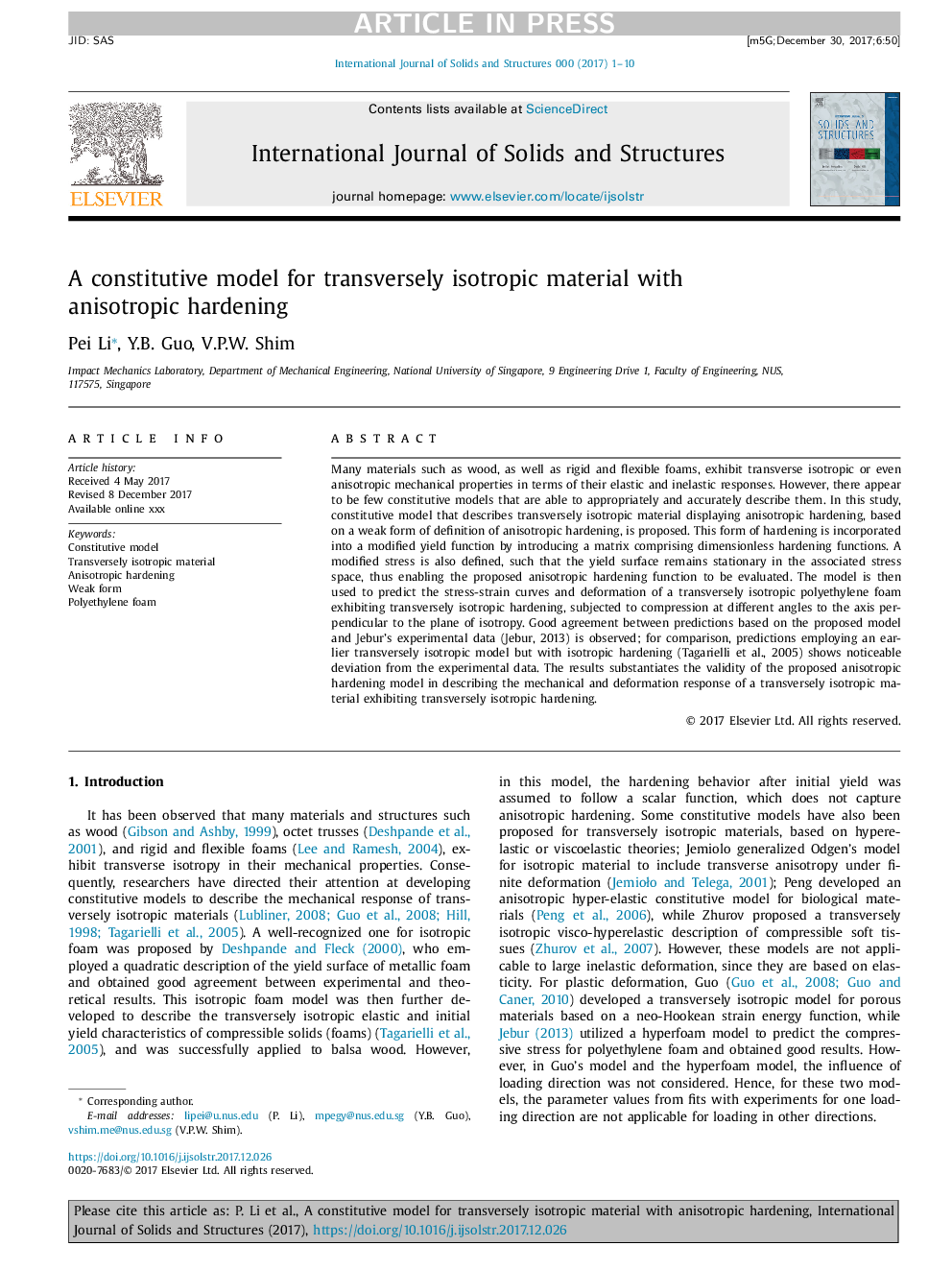| Article ID | Journal | Published Year | Pages | File Type |
|---|---|---|---|---|
| 6748358 | International Journal of Solids and Structures | 2018 | 10 Pages |
Abstract
Many materials such as wood, as well as rigid and flexible foams, exhibit transverse isotropic or even anisotropic mechanical properties in terms of their elastic and inelastic responses. However, there appear to be few constitutive models that are able to appropriately and accurately describe them. In this study, constitutive model that describes transversely isotropic material displaying anisotropic hardening, based on a weak form of definition of anisotropic hardening, is proposed. This form of hardening is incorporated into a modified yield function by introducing a matrix comprising dimensionless hardening functions. A modified stress is also defined, such that the yield surface remains stationary in the associated stress space, thus enabling the proposed anisotropic hardening function to be evaluated. The model is then used to predict the stress-strain curves and deformation of a transversely isotropic polyethylene foam exhibiting transversely isotropic hardening, subjected to compression at different angles to the axis perpendicular to the plane of isotropy. Good agreement between predictions based on the proposed model and Jebur's experimental data (Jebur, 2013) is observed; for comparison, predictions employing an earlier transversely isotropic model but with isotropic hardening (Tagarielli et al., 2005) shows noticeable deviation from the experimental data. The results substantiates the validity of the proposed anisotropic hardening model in describing the mechanical and deformation response of a transversely isotropic material exhibiting transversely isotropic hardening.
Related Topics
Physical Sciences and Engineering
Engineering
Civil and Structural Engineering
Authors
Pei Li, Y.B. Guo, V.P.W. Shim,
